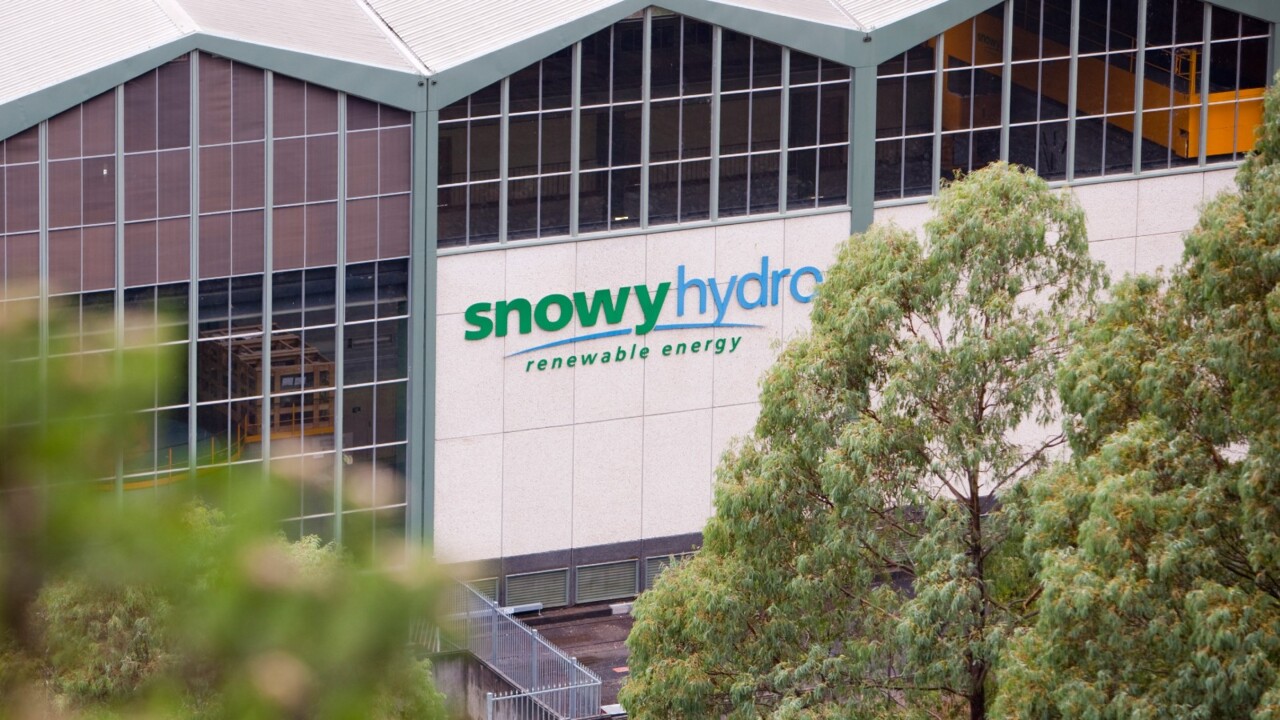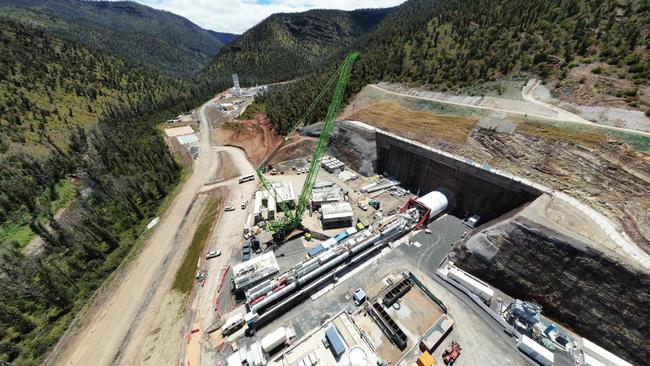Fixed-price contract up for debate as Snowy 2.0 signals more delays
The fixed-price contract covering the giant Snowy Hydro 2.0 expansion could need to be scrapped to get the pumped hydro project finished.

The fixed-price contract covering the giant Snowy Hydro 2.0 expansion could need to be scrapped to get the pumped hydro project finished, according to Snowy Hydro chief executive Dennis Barnes.
The blowout could add another two years to the construction time for the project, meaning its commercial operation could be delayed until the end of the decade, putting additional pressure on the National Electricity Market amid a planned wave of coal-fired energy plant closures.
And, with Snowy Hydro now confirming the expansion will overrun its already-revised $5.9bn budget, the latest blowouts could also leave the federal government on the hook for significant additional costs.
But Italy’s Webuild looks set to emerge a clear winner from the latest revelations, with Mr Barnes flagging a renegotiation of the fixed-price contract to share any additional costs.
Snowy Hydro said Tuesday the commercial operation of all units may be delayed until the end of the decade, with a potential latest start-up date of December 2029 and an earliest date of December 2028.
First power is now due between June and December 2028 at the latest, with an earliest date of June to December 2027.
The scale of the cost blowouts are not likely to be known until July, when Snowy Hydro submits its next corporate plan to the federal government, the company’s sole shareholder.

But Mr Barnes told The Australian renegotiation of the fixed price contract with the Future Generation Joint Venture – now run by Webuild, after its acquisition of collapsed former partner Clough – was a necessary step to get the massive pumped hydro project back on track.
“The contract has been a struggle. We want them to be motivated around a realistic time frame. So it’s appropriate to want to reset, which will inevitably mean some renegotiation of the contract,” Mr Barnes said.
“My job is to try and get everybody going in the same direction, and a fixed price contract in this inflationary environment doesn‘t have everybody going in the same direction.”
But Mr Barnes said Snowy had no immediate need to seek a cash injection from the federal government, saying the company’s core business was running well and any decision on how to pay for cost overruns may not need to be made for some time.
The Snowy boss said it was also too early to say whether Snowy would look to fund the additional costs by taking on debt, or whether another equity injection from the government would be needed.
Both are a possibility, but Mr Barnes said the best funding option for Snowy could be decided down the track.
“If you look at how the whole market is developing, every year something major changes – more solar, or coal-fired plant changes, and new transmission timetables. This (project) will be later, but then we’ll have been running the Kurri Kurri (gas plant) for longer. And Kurri Kurri has got a very strong business case, so we‘ll have more earnings. So there’s a lot of moving parts to this,” he said.
“The rest of the business is performing pretty well. The revenue side of this project has only gotten stronger as people have realised the scale of the challenge in converting variable renewables into firm power.”

Mr Barnes told The Australian the new completion forecast was a “realistic, achievable range”, with the company hoping to bring the project as early as it could.
“My expectation – and obviously my objective – is to refine it to the upside,” he said.
The Snowy Hydro project has been dogged by a series of project issues including the collapse of one of its contractors, Clough, delays through Covid-19 and, more recently, a major tunnel boring machine getting stuck in the Snowy Mountains.
Snowy blamed the delays and cost hikes on four factors: the mobilisation and resourcing implications of the Covid-19 pandemic; the effect of global supply chain disruption and inflation impacting the cost and availability of a skilled workforce, materials, and shipping.
Snowy said design elements also required more time to complete due to their technically complex nature, with the final design now being more expensive to construct.
Mr Barnes said Snowy’s contractor had been forced to build more roads than initially forecast to ensure equipment and materials could be moved safely, as well as other more complicated changes to the scope of the project, including the need to line a key incline tunnel with steel.
Snowy also pointed to the impact of variable site and geological conditions, including the soft ground that has “paused” tunnel boring machine Florence’s progress at Tantangara since before Christmas.
Mr Barnes said a slurry plant that should allow Florence to get moving again would be commissioned within a few weeks, and Snowy and FGJV were also looking for other ways to make up for lost time on the headrace tunnel.
“One of the things we’re thinking about is whether we tackle this headrace tunnel from both ends,” he said.
Rather than use a tunnelling machine from the other side, Mr Barnes said Snowy’s contractors were looking at whether they could use traditional mining drill and blast methods at the other end of the tunnel to try to make up for lost time.
The Australian revealed in August 2022 the giant hydro development had been hit with more than $2.2bn of additional payment claims, with its lead builders Clough and Webuild blaming the Covid-19 pandemic and surge in material prices for the cost hike.
Snowy in October then confirmed it was in talks with the joint venture, now run by Webuild, over the cost claims.
The delay of the massive hydro expansion will now likely significantly hike the risk of blackouts in the power grid later this decade as coal plants exit the system. It may also increase pressure on Origin Energy to rethink plans to close its giant Eraring coal station in NSW by August 2025.
Any delay will also add to electricity system risks after the grid operator warned of worsening forecast reliability in NSW in 2026 and 2027 should Snowy not hit the original 2.0 deadline.







To join the conversation, please log in. Don't have an account? Register
Join the conversation, you are commenting as Logout